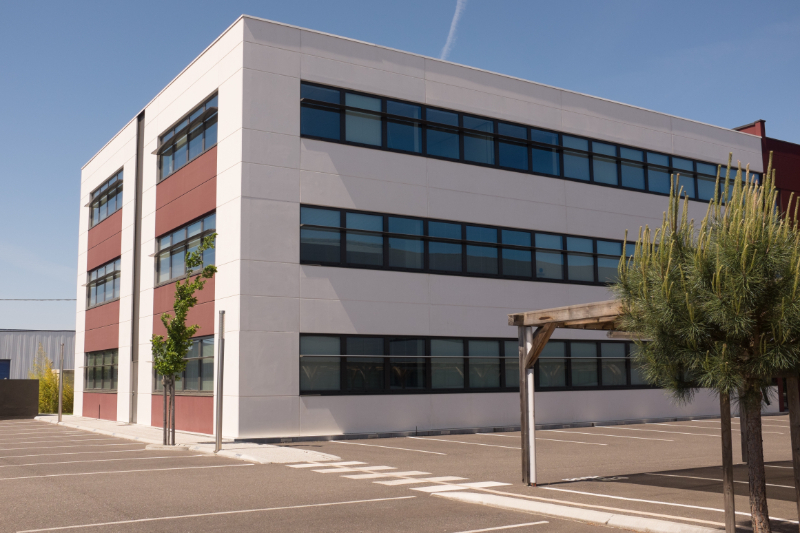This article asks: What Are Examples Of Commercial Properties? Kent Property Witness offer investment property valuation for Tonbridge and Kent. Find out more about the different types of commercial property and commercial property classifications.
What Is Commercial Real Estate (CRE)?
Commercial real estate (CRE) refers to properties that are specifically used for business purposes and not for residential living. The primary function of commercial real estate is to provide workspaces or income-generating activities such as retail, office, and industrial businesses. This type of real estate is different from residential properties, which are designed for human habitation and not for commercial or industrial use. The main goal of commercial real estate is to generate a profit for the property owner through capital gain or rental income.
Commercial real estate comes in different types and can be anything from an office building to a restaurant, a warehouse, or a shopping centre. The four main categories of commercial real estate are office space, industrial use, multifamily rental, and retail. Investing in commercial real estate can provide a source of passive income through rental income, as well as the potential for capital appreciation over time. However, it usually requires more sophistication and larger amounts of capital from investors than residential real estate.
In summary, commercial real estate is property used exclusively for business-related purposes or to provide a workspace, and its primary goal is to generate a profit for the property owner through rental income or capital gain. It is an important part of the business world, providing spaces for income-generating activities and offering potential investment opportunities for those looking to diversify their portfolio.
What are the different types of commercial property?
Real estate investment offers an array of opportunities to invest in various asset classes. These include multifamily, office, industrial, retail, hotels and hospitality, mixed use, land, and special purpose properties.

Multifamily
Multifamily properties are buildings that contain multiple residential units, such as apartments or condominiums. They are popular among investors because of their steady cash flow, long-term tenant retention, and potential for appreciation.

OFFICE
Office properties are commercial buildings designed for business operations, such as office spaces, conference rooms, and meeting areas. They offer opportunities for long-term leases and can provide a stable source of rental income.

RETAIl
Retail properties usually consist of shopping centres. Retail investors can take advantage of the steady rental income and the potential for value appreciation through lease renewals, property improvements, and tenant mix optimization.

INDUSTRIAL
Industrial properties include warehouses, distribution centres, manufacturing plants, and other facilities used for production, storage, or logistics. These properties can offer significant rental income and appreciation potential.

HOSPITALITY
Hotels / Hospitality properties can provide investors with stable income through nightly room rates, food and beverage sales, and other services offered. The success of these investments often depends on factors such as location, tourism trends, and overall economic conditions.

MIXED USE
Mixed-use properties combine two or more types of properties, such as residential and commercial, in a single development. Investors can benefit from the diversification of revenue streams and the ability to appeal to a broader tenant or buyer base.

LAND
Land investments can include undeveloped or partially developed properties, with the potential for appreciation through rezoning or development. This type of investment requires knowledge, thorough due diligence and market analysis.

SPECIAL PURPOSE
Special purpose properties are those that are designed for specific uses, such as hospitals, schools, or government buildings. These types of investments can provide stable cash flow and long-term tenants but often require specialized knowledge and experience.
What are the commercial property classifications?
Commercial properties are buildings and spaces that are used for business purposes. There are different types of commercial properties such as retail spaces, offices, restaurants, hotels, and more. Each type of commercial property has its own unique characteristics that make it suitable for a particular type of business. The classification of commercial properties is important as it determines the allowable usage of the property. The Town and Country Planning (Uses Classes) Order of 1987 divides commercial buildings into classes based on how they should be occupied.
Each type of commercial building has a use defined by the local authority, known as “use classes”, and any business carried out in the commercial building must be in line with its planning use, otherwise fines may be imposed. For example, a property with A3 usage can be used for “the sale of food or drink for consumption on the premises or of hot food for consumption off the premises”.
This classification system helps planners ensure that an area doesn't include specific property types to reduce the number of complaints, such as no pubs. It also identifies what type of business is allowed to move into the premises, ensuring that businesses are located in appropriate areas. The different commercial property use classes found in the UK include:

A1 use class includes shops, post offices, hairdressing, and more.
A2 use class is for financial and professional services such as banks and betting offices.
A3 use class is for the sale of food and drink for consumption on the premises such as restaurants, snack bars, and cafés.
A4 use class is for drinking establishments such as public houses and wine bars.
A5 use class is for premises where the primary purpose is the sale of hot food for consumption off the premises.
B1 use class is for offices not classified within A2, research and development studios, and any industrial process such as laboratories or high-tech industries.
B2 use class is for general industrial use for carrying on an industrial process other than one falling within class B1, or within classes B3 to B7.
B8 use class is for storage and distribution, such as wholesale warehouses and distribution centres.
C1 use class is for hotels, boarding or guest houses.
C2 use class is for residential institutions such as boarding schools, residential colleges, and nursing homes.
C3 use class is for dwelling houses such as single-person or family dwellings.
F1/D1 use class is for non-residential institutions such as clinics, health centres, museums, and art galleries.
D2 use class is for assembly and leisure such as cinemas, sports halls, swimming baths, and more.
Sui-Generis use class is for buildings that do not fall within the main classes such as theatres, nightclubs, scrap yards, petrol filling stations, and launderettes.

Why is it important to understand commercial buildings?
Understanding commercial buildings is crucial for many professionals involved in the real estate industry. Commercial properties, such as office buildings, hotels, restaurants, and retail spaces, provide vital business opportunities for entrepreneurs, investors, and property managers. For example, knowing the class and type of commercial property can help investors determine the level of return they can expect from their investment.
A class-A office building in a prime location can yield higher rents and attract top-tier tenants, while a lower-grade retail space may have lower rental income but can be more accessible for small business owners. Moreover, understanding commercial buildings is essential for those involved in the construction and maintenance of such properties.
Commercial buildings require different design and infrastructure needs than residential buildings due to their use for business purposes. The codes and regulations that apply to commercial buildings are also unique and can vary depending on the type of commercial property. Understanding the different types of commercial buildings and their unique requirements can help professionals make informed decisions.
For example, a property manager responsible for maintaining an office building will need to understand the infrastructure requirements for various types of office spaces. This knowledge can help ensure the building is well-maintained and can attract high-quality tenants.
In summary, understanding commercial buildings is essential for various professionals involved in the real estate industry. This understanding can help businesses make informed decisions about their physical location, property managers maintain their properties effectively, and investors and developers make sound investments that provide a satisfactory return.
Are you looking for advice about property valuation in Tonbridge and Kent?
Contact our expert witness surveyor to discuss your requirements.

